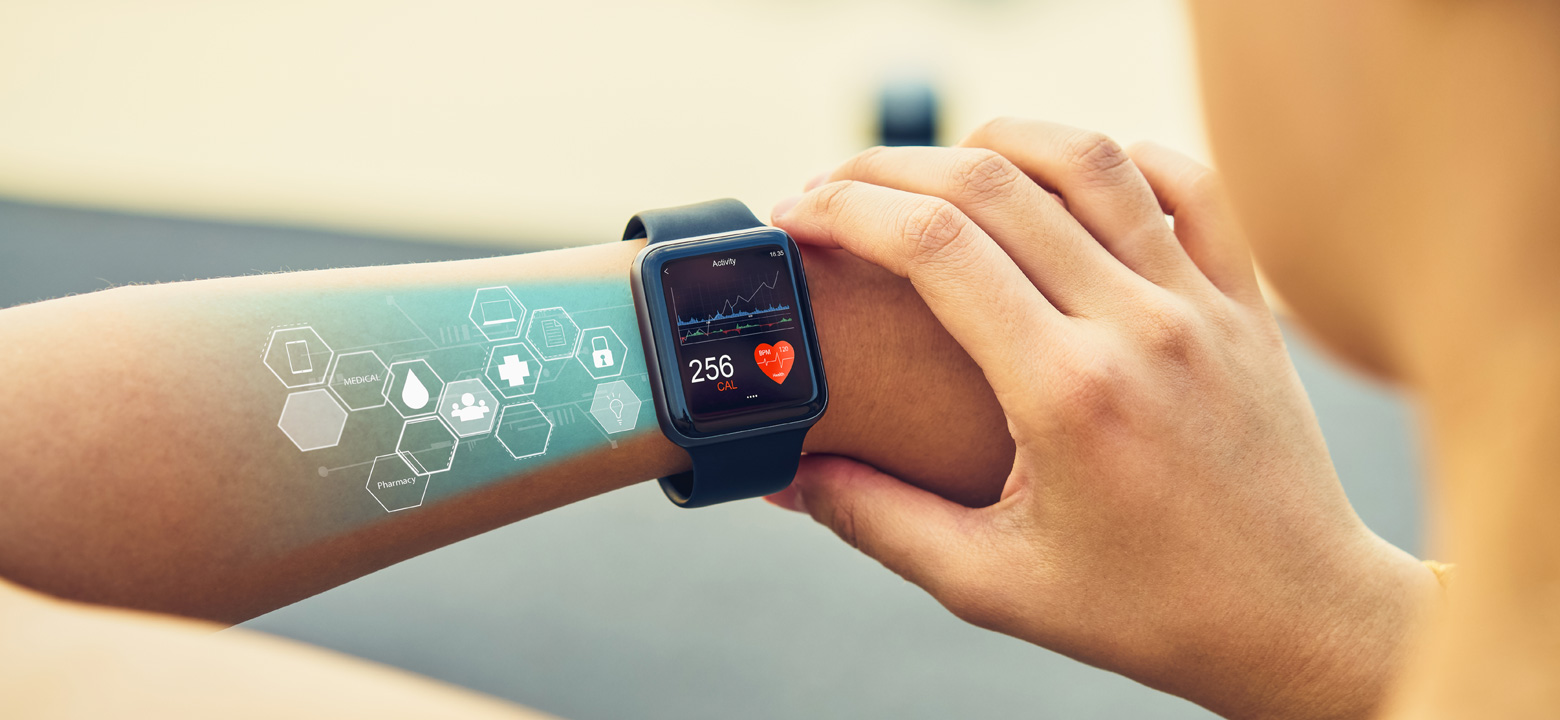
The more medical science advances, the more it emphasizes high-tech solutions over strictly pharmaceutical treatments. This is particularly relevant now, as many countries face aging populations and an increase in the number of patients living with chronic illnesses. While medications can suffer from a loss of effectiveness and an increase in side-effects over time, medical technology shows a lot of promise when it comes to improving patient outcomes.
2019 saw a 19% increase in revenue for the wearable medical device market—the biggest jump since 2015—bringing it to a total value of $70 billion. COVID-19 has impacted some aspects of the wearables market positively, and others negatively. Some products saw an 80% drop in sales due to stay-at-home orders and business closures. Smartwatches, for example, dropped, as did augmented and virtual reality devices. Skin patches and e-textiles, however, are still going strong according to a pre-COVID estimate and forecast for 2020.
One interesting way that the medical technology market has changed recently is due to an increase in telemedicine. With people reluctant to go to doctors' offices, there has been an increase in interest in what are considered “potentially medical” wearable devices. These devices are not strictly for medical use, but integrate sensing capabilities for O2 saturation, core temperature, heart rate, and other metrics that could be used medically. This market reached $28 billion in 2019, and is likely to continue to grow.
One key advantage of wearable medical devices is that they may know when we're sick before we do. Continuous monitoring means that there's a lot of data available for establishing the wearer's baseline, and it's easy to make note of seemingly-minor changes in things like oxygen saturation, respiration rate, and body temperature. In the case of novel diseases like COVID-19, where patients may present with sub-clinical symtpoms, wearables may make it easier to figure out when infection took place.
Some wearables can even predict when patients might begin exhibiting symptoms. In a study by the Rockefeller Neuroscience Institute, a sleep and activity tracker called the Oura ring was able to predict the onset of symptoms up to three days before they actually exhibited them. Another effort by the Scripps Research Translational Institute discovered that FitBits were able to predict the onset of COVID-19 symptoms with up to 78% accuracy.
Devices for medical use face challenges that other wearables don't. While it's nice if a cellphone's pulse tracker or O2 sensor is accurate, it's not considered a piece of medical equipment and therefore isn't expected to be as accurate or precise. When it comes to designing and manufacturing wearable medical technology, this is just the tip of the iceberg.
Wearable or portable items are battery powered by necessity, which means that there needs to be a way to provide for enough battery life without adding too much bulk or heat. Battery life is particularly important for medical devices, since they are intended to monitor continuously. They have to be small, lightweight, and efficient at how they use power. Incorporating power-saving features like standby or sleep mode can help, as can load switches.
Aside from physical considerations like accuracy, portability, and battery life, engineers also have to figure out how to keep patients' data safe. Since wearables transmit sensitive patient information, preventing data theft is paramount. Since these devices can also impact patient safety, they have to be secure from hackers. Sending patient data to a cloud server can help make it easier to integrate the device with multiple platforms, but the patients' data is only as secure as that server is.
Tokyo company MEDIROM was recently contracted to produce MOTHER wearable trackers for Kansai Medical University Hospital. These innovative devices use body heat to generate power, making them the first perpetually self-recharging device. This allows them to record users' calorie intake, activity levels, sleep length, sleep quality, and other metrics without ever needing to be taken off and recharged.
Siren have also produced a sock-like wearable that can detect temperature changes, helping to prevent diabetic neuropathy. In diabetic neuropathy, the nerves in the feet become damaged over time, resulting in pain or numbness. This can lead to undiagnosed infections and diabetic foot ulcers, which often require amputation. Monitoring temperature changes can indicate when damage to the feet is occurring, even before ulcers appear. Siren's socks have integrated temperature sensors that can detect temperature changes in multiple areas of the feet. This is 87% more effective than visual foot checks alone.
While COVID-19 has disrupted the market for certain types of wearable technology, social distancing and the rise in telemedicine have increased the potential demand for wearable medical devices. Overall, the market is growing strong, and experts estimate that it will continue to expand through 2025.